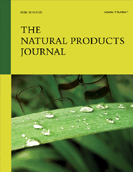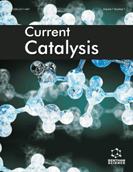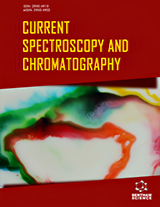Abstract
The cyanide anion (CN−) is known to be an extremely toxic anion and can directly lead to the death of human beings in several minutes because it strongly binds cytochrome-c, thereby disrupting the mitochondrial electron-transport chain and causing a decreased oxidative metabolism and oxygen utilization. A colorimetric sensor L1 bearing azosalicylic aldehyde of benzoyl hydrazone was designed and synthesized. The binding property of the sensor L1 with anions such as F−, Cl−, Br−, I−, CH3COO−, H2PO4−, HSO4−, ClO4−, CN− and SCN−, was examined by UV-vis and 1H NMR spectra. The result showed that sensor L1 has behaved good selectivity and high sensitivity for CN− in DMSO/H2O (5:5, v/v) binary solutions. When CN− was added to the solution containing L1, a dramatic color change from colorless to red was observed, while the other anions did not cause noticeable changes. And the detection limits were 1.0×10−5 mol•L-1 and 3.7×10−8 mol•L-1 of CN− from visual color changes and UV-vis spectrum changes respectively. Furthermore, test strips based on sensor L1 were fabricated, and sensor L1 could be served as practical colorimetric sensor to detect CN− for “in-the-field” measurement. In addition, test strips based on L1 were fabricated, which could serve as a practical colorimetric sensor to detect CN− in field measurements or in test kits.
Keywords: Colorimetric recognition, cyanide detect, anions sensor, test strip.
Graphical Abstract
Current Analytical Chemistry
Title:Cyanide Detection using Azo-acylhydrazone in Aqueous Media with High Sensitivity and Selectivity
Volume: 12 Issue: 2
Author(s): Jing Qi, Jinghan Hu, You Sun and Jianbin Li
Affiliation:
Keywords: Colorimetric recognition, cyanide detect, anions sensor, test strip.
Abstract: The cyanide anion (CN−) is known to be an extremely toxic anion and can directly lead to the death of human beings in several minutes because it strongly binds cytochrome-c, thereby disrupting the mitochondrial electron-transport chain and causing a decreased oxidative metabolism and oxygen utilization. A colorimetric sensor L1 bearing azosalicylic aldehyde of benzoyl hydrazone was designed and synthesized. The binding property of the sensor L1 with anions such as F−, Cl−, Br−, I−, CH3COO−, H2PO4−, HSO4−, ClO4−, CN− and SCN−, was examined by UV-vis and 1H NMR spectra. The result showed that sensor L1 has behaved good selectivity and high sensitivity for CN− in DMSO/H2O (5:5, v/v) binary solutions. When CN− was added to the solution containing L1, a dramatic color change from colorless to red was observed, while the other anions did not cause noticeable changes. And the detection limits were 1.0×10−5 mol•L-1 and 3.7×10−8 mol•L-1 of CN− from visual color changes and UV-vis spectrum changes respectively. Furthermore, test strips based on sensor L1 were fabricated, and sensor L1 could be served as practical colorimetric sensor to detect CN− for “in-the-field” measurement. In addition, test strips based on L1 were fabricated, which could serve as a practical colorimetric sensor to detect CN− in field measurements or in test kits.
Export Options
About this article
Cite this article as:
Qi Jing, Hu Jinghan, Sun You and Li Jianbin, Cyanide Detection using Azo-acylhydrazone in Aqueous Media with High Sensitivity and Selectivity, Current Analytical Chemistry 2016; 12 (2) . https://dx.doi.org/10.2174/1573411011666150827194259
| DOI https://dx.doi.org/10.2174/1573411011666150827194259 |
Print ISSN 1573-4110 |
| Publisher Name Bentham Science Publisher |
Online ISSN 1875-6727 |
 19
19 2
2 1
1 1
1
- Author Guidelines
- Bentham Author Support Services (BASS)
- Graphical Abstracts
- Fabricating and Stating False Information
- Research Misconduct
- Post Publication Discussions and Corrections
- Publishing Ethics and Rectitude
- Increase Visibility of Your Article
- Archiving Policies
- Peer Review Workflow
- Order Your Article Before Print
- Promote Your Article
- Manuscript Transfer Facility
- Editorial Policies
- Allegations from Whistleblowers
- Announcements


























